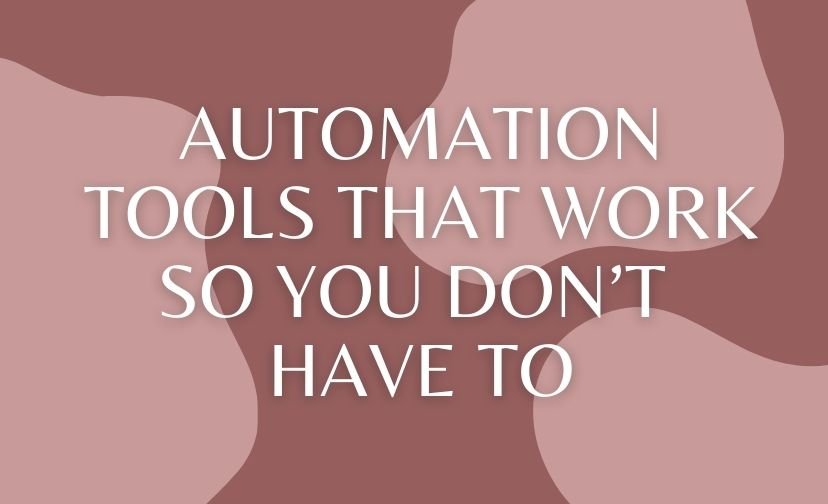Imagine a world where mundane tasks are handled seamlessly by machines, freeing you to focus on what truly matters. This isn’t a far-fetched dream; it’s the reality brought to life by automation tools.
As businesses strive to boost efficiency and productivity, the power of automation has become an indispensable ally in the modern workplace. Let’s dive into the transformative impact of these tools and how they can revolutionize your workday.
Understanding Automation Tools
In today’s fast-paced world, understanding automation tools is crucial for any business aiming to stay competitive. These tools are not just about replacing human effort but enhancing it by taking over repetitive tasks, reducing errors, and improving overall efficiency.
What Are Automation Tools?
At their core, automation tools are software solutions designed to perform tasks with minimal human intervention.
They range from simple scripts that automate data entry to complex systems powered by artificial intelligence (AI) that can analyze data and make decisions. Whether it’s automating email responses or managing entire business processes, these tools streamline operations and allow employees to focus on strategic tasks.

The Importance of Automation in Today’s Workplace
The significance of automation in the modern workplace cannot be overstated. With the increasing demand for speed and accuracy, businesses are turning to task automation to maintain a competitive edge.
Automation tools not only enhance productivity but also lead to higher employee satisfaction by eliminating the tedium of repetitive tasks. As noted by industry experts, companies that embrace automation see a marked improvement in operational efficiency and employee engagement.
Types of Automation Tools
The landscape of automation tools is vast and varied, catering to different needs across industries. From simple task automation to sophisticated productivity software, there’s a tool for every requirement.
Task Automation Solutions
Task automation solutions are designed to handle routine activities such as scheduling, data entry, and email management.
Tools like Zapier and IFTTT are popular for their ability to connect various apps and automate workflows without requiring extensive coding knowledge. These solutions empower businesses to save time and reduce the risk of human error.
Consider starting small when implementing task automation solutions. Identify repetitive tasks that consume a lot of time and begin automating them one by one. This gradual approach helps in managing the transition smoothly.

Efficiency Tools for Teams
Efficiency tools focus on enhancing collaboration and communication within teams. Platforms like Slack and Microsoft Teams offer automation features that streamline interactions, such as automatic notifications and task reminders. These tools ensure that team members are always on the same page, enhancing productivity and reducing miscommunication.
Productivity Software Options
Productivity software encompasses a wide range of tools designed to optimize individual and team performance.
From project management platforms like Asana to document management systems like Google Workspace, these tools incorporate automation to simplify complex processes. They help in organizing tasks, tracking progress, and ensuring deadlines are met efficiently.

Benefits of Using Automation Tools
The benefits of automation tools extend beyond mere convenience. They transform the way businesses operate, offering tangible improvements in various aspects of work.
Increasing Efficiency and Productivity
Automation tools significantly enhance efficiency by handling repetitive tasks swiftly and accurately. This not only speeds up processes but also allows employees to dedicate their time to more valuable activities.
For instance, automating customer inquiries through chatbots frees up support staff to tackle more complex issues, thereby increasing overall productivity.

Reducing Human Error and Enhancing Accuracy
Human error is an inevitable part of manual processes, often leading to costly mistakes. Automation tools minimize these errors by ensuring tasks are performed consistently and precisely. In sectors like finance and healthcare, where accuracy is paramount, automation tools play a critical role in maintaining high standards of quality and compliance.
Improving Employee Satisfaction and Engagement
By automating mundane tasks, employees can focus on more engaging and fulfilling work. This shift not only boosts morale but also enhances job satisfaction. Employees feel valued and motivated, knowing their skills are being utilized for more strategic purposes, leading to higher retention rates and a more positive workplace culture.
Real-World Applications of Automation Tools
Automation tools are making waves across various industries, each leveraging these technologies to drive growth and efficiency.

Case Studies of Successful Automation
One notable example is Nintex’s implementation of Intelligent Process Automation (IPA), which transformed a financial institution by automating 60-70% of its tasks. This led to a 30% increase in process efficiency, showcasing the power of automation in streamlining operations and enhancing productivity.
Automation in Different Industries
From healthcare to retail, automation tools are reshaping industries. In healthcare, automation streamlines patient data management, reducing administrative burdens and improving patient care.
In retail, automation optimizes inventory management, ensuring timely restocking and minimizing losses due to stockouts. These examples highlight the versatility and impact of automation across sectors.

Challenges and Considerations in Automation
While automation offers numerous benefits, it’s essential to address potential challenges to ensure successful implementation.
Overcoming Resistance to Change
Resistance to change is a common hurdle in adopting automation tools. Employees may fear job displacement or struggle to adapt to new technologies.
To overcome this, businesses should focus on transparent communication and involve employees in the transition process. Demonstrating how automation can enhance their roles rather than replace them can alleviate concerns and foster acceptance.

The Role of Training and Support
Proper training and support are crucial for the effective use of automation tools. Providing comprehensive training programs and ongoing support ensures that employees are equipped with the necessary skills to leverage these tools effectively.
This not only maximizes the benefits of automation but also empowers employees to contribute to continuous improvement initiatives.
Future Trends in Automation Tools
The future of automation is bright, with advancements in AI and machine learning set to redefine what’s possible.
The Rise of AI in Automation
AI is at the forefront of the next wave of automation, enabling more intelligent and adaptive systems. AI-powered automation tools can analyze vast amounts of data, identify patterns, and make informed decisions. This evolution is paving the way for more sophisticated applications, from predictive maintenance in manufacturing to personalized marketing strategies in retail.

Predictions for Automation in Business
As automation continues to evolve, businesses can expect even greater integration of these tools into daily operations.
The focus will shift towards more personalized and data-driven automation solutions, enhancing customer experiences and driving innovation. Companies that embrace these trends will be well-positioned to thrive in an increasingly competitive landscape.
Getting Started with Automation Tools
Embarking on the journey of automation requires careful planning and consideration. Here are some tips to help you get started:
Choosing the Right Automation Tool for Your Needs
Selecting the right automation tool is critical to achieving your business objectives. Consider factors such as ease of use, integration capabilities, and scalability. Evaluate different options based on your specific needs and choose a tool that aligns with your long-term goals.
Engage with stakeholders from various departments when choosing automation tools. Their insights can provide valuable perspectives on the specific needs and pain points that automation should address.

Tips for Implementing Automation Successfully
- Start Small: Begin with a pilot project to test the waters and understand the impact of automation on your processes.
- Monitor and Adjust: Continuously monitor the performance of automation tools and make necessary adjustments to optimize outcomes.
- Encourage Feedback: Foster a culture of feedback where employees can share their experiences and suggest improvements for automation processes.
Regularly review and update your automation strategies to ensure they remain aligned with evolving business goals and technological advancements.





